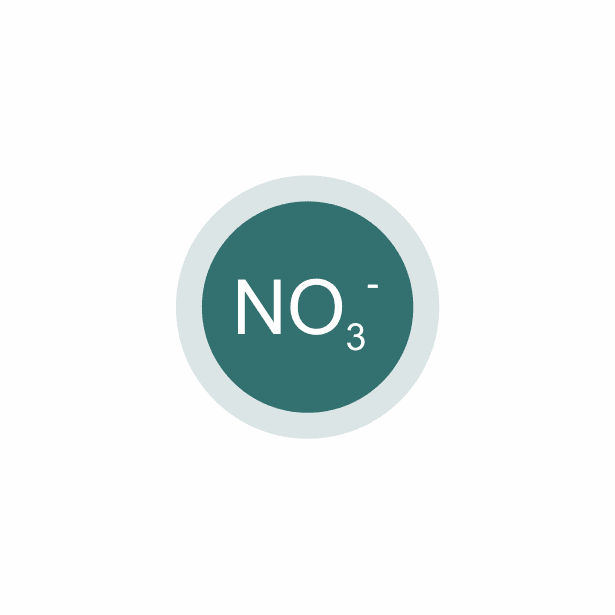The nitrate ion, NO3–, is the base of nitric acid, HNO3, which is a strong acid with a pKa of -1.3, and thus fully dissociated in all aqueous solutions regardless of pH. The nitrate ion is singly charged and carries a hydration layer comprised of 2.0 associated water molecules. Some properties of the nitrate ion are summarized in the table below.
Nitrate is often analysed by ion chromatography (IC), using either carbonate-bicarbonate eluents or hydroxide eluents. Unlike most of the other common inorganic anions, nitrate absorbs ultraviolet (UV) light, and can thus be determined both by suppressed conductivity detection, and by UV spectrometry at wavelengths below 220 nm.
| Ion | Molecular weight, M | Molar conductivity, λ0 | Diffusion coefficient, D | Ionic radius, r | Hydration shell, Δr |
|---|---|---|---|---|---|
| (g/mol) | (S·cm2/mol) | (mm2/ms) | (pm) | (pm) | |
| Nitrate, NO3– | 62.01 | 71 | 1.90 | 179 | 44 |
| M, was retrieved from Chemical Aid Molecular Mass Calculator. Values for λ0 & D, are from CRC Handbook of Chemistry and Physics, 75th Ed., D.R. Lide (Ed.), CRC Press Inc. (1994), Boca Raton, pp 5-90 to 5-92. Data for r & Δr, plus the number of water molecules, n, mentioned in the text, are from Y. Marcus, J. Chem. Soc. Faraday Trans., 87 (1991) 2995-2999. The pKa values mentioned in the text are from Organic Chemistry Data pKa compilation. | |||||
To learn more, browse the application examples below or contact Diduco to discuss your specific analysis.


Get in contact
I’ll be happy to answer any questions you might have regarding our products and services.
Tobias Jonsson
CEO, PhD in chemistry
Mobile: +46 705783490
E-mail: tobias@diduco.com

Diduco is a leading provider of professional services in high performance liquid chromatography and manufacturer of the Xenoic® XAMS chemical suppressor and ASUREX automatic regenerator for ion chromatography.
Diduco AB
Tvistevägen 48C
90736 Umeå
Sweden